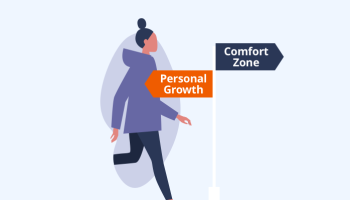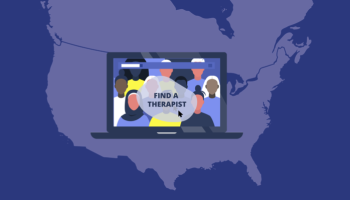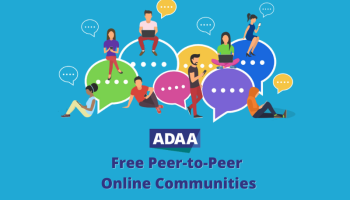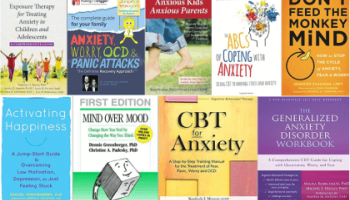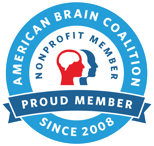Most people can find something they don’t like about their body, and many take steps to eat more healthfully or start an exercise plan to improve their appearance.
Those with eating disorders develop habits that can cause a great deal of harm. They may fast or severely restrict their calories, exercise for hours on end each day, or take other actions to prevent any weight gain. Even though they are often underweight, they have an intense fear of becoming fat.
Usually appearing during adolescence or young adulthood, eating disorders can also develop during childhood or later in adulthood.
They are much more common among women and girls, but men and boys account for about 5 to 15 percent of those with anorexia or bulimia and about 35 percent of those with binge eating disorder.
Eating disorders commonly co-occur with anxiety disorders. For those who have an anxiety disorder, a co-occurring eating disorder may make their symptoms worse and recovery more difficult. It’s essential to be treated for both disorders.
An eating disorder is present when a person experiences severe disturbances in eating behavior, such as extreme reduction of food intake or extreme overeating, or feelings of extreme distress or concern about body weight or shape. A person with an eating disorder may diet, exercise, or eats excessively, which can have life-threatening or even fatal consequences.
Check out this Blog Post written by the ADAA Past-President, Karen Cassiday
Watch an ADAA recorded webinar on Eating Disorders & Co-Occurring Mental Health Conditions.
Anorexia Nervosa
People with the eating disorder called anorexia nervosa see themselves as overweight even though they are dangerously thin.
The process of eating becomes an obsession. Unusual eating habits develop, such as avoiding food and meals, picking out a few foods and eating these in small quantities, or carefully weighing and portioning food. They may repeatedly check their body weight or engage in other techniques to control their weight, such as intense and compulsive exercise, or purging by means of vomiting and abuse of laxatives, enemas, and diuretics.
Many people with anorexia also have coexisting psychiatric and physical illnesses, including depression, anxiety, obsessive behavior, substance abuse, cardiovascular and neurological complications, and impaired physical development.
Other symptoms may develop over time:
- thinning of the bones
- brittle hair and nails
- dry and yellowish skin
- growth of fine hair over body
- mild anemia and muscle weakness and loss
- severe constipation
- low blood pressure, slowed breathing and pulse
- drop in internal body temperature, causing a person to feel cold all the time
- lethargy
- infrequent or absent menstrual periods
Bulimia Nervosa
Bulimia nervosa is characterized by recurrent and frequent episodes of eating unusually large amounts of food and feeling a lack of control over the eating. This binge-eating is followed by purging (vomiting, excessive use of laxatives or diuretics), fasting, or excessive exercise.
People with bulimia usually weigh within a normal range, but like those who have anorexia, they fear gaining weight, wish to lose weight, and feel intensely dissatisfied with their bodies.
And like those with anorexia, people with bulimia often have coexisting psychological illnesses such as depression, anxiety, or substance abuse problems. Many physical conditions also result from their behavior, including electrolyte imbalances, gastrointestinal problems, and oral and tooth-related problems.
Other symptoms:
- chronically inflamed and sore throat
- swollen glands in the neck and below the jaw
- worn tooth enamel and increasingly sensitive and decaying teeth as a result of exposure to stomach acids
- gastroesophageal reflux disorder (GERD)
- intestinal distress and irritation from laxative abuse
- kidney problems from diuretic abuse
- severe dehydration from purging of fluids
Binge Eating Disorder and EDNOS
Another category is "eating disorders not otherwise specified,” or EDNOS, which includes several variations of eating disorders. Most of these disorders are similar to anorexia or bulimia but with slightly different characteristics. Binge eating disorder is one type of EDNOS.
People with binge-eating disorder experience frequent episodes of out-of-control eating. But they do not purge their bodies of excess calories, and many people with this disorder are overweight or obese. They experience feelings of guilt, shame, or distress, often leading to another cycle of binge eating.
Obese people with binge eating disorder often have other psychological illnesses, too, including anxiety, depression, and personality disorders. In addition, obesity is associated with cardiovascular disease and hypertension.
Anxiety or Eating Disorder: Which Comes First?
A 2004 study found that two-thirds of people with eating disorders suffer from an anxiety disorder at some point in their lives and that around 42 percent had developed an anxiety disorder during childhood, well before the onset of their eating disorder. Other studies also confirm that an anxiety disorder usually the onset of an eating disorder, but panic disorder often follows.
Obsessive-compulsive disorder (OCD) is the most common anxiety disorder to co-occur with an eating disorder. Those who have both disorders often develop compulsive rituals connected to food, such as weighing every bit of food or cutting it into tiny pieces, or even binge eating.
The odds of developing bulimia are greater for women with posttraumatic stress disorder (PTSD) and social anxiety disorder is also commonly found among people with an eating disorder.
Treatment
Anxiety and eating disorders may be treated at the same time and in the same manner. Even so, recovery from one disorder does not ensure recovery from another, so it is necessary to seek help for both.
A well-established, highly effective, and lasting treatment is cognitive-behavioral therapy, or CBT, which focuses on identifying, understanding, and changing thinking and behavior patterns. Benefits are usually seen in 12 to 16 weeks, depending on the individual.
Taking medications under a doctor’s supervision and joining a support group are also sound treatment options.
Treatment for eating disorders also includes nutritional management and nutritional counseling. Those who experience severe symptoms may require hospitalization to help restore them to a safe and healthy weight.







